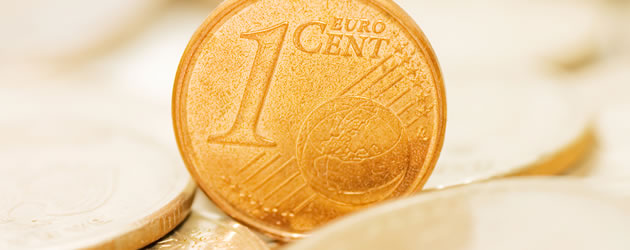
The Pound to Euro exchange rate (GBP/EUR) is currently over six cents worse-off than it was at the start of the year. During that time the UK has had its coveted triple-A credit rating slashed by two agencies, narrowly avoided a triple-dip recession and seen speculation grow regarding the possibility of a ‘Brexit’ from the European Union. This particularly nasty set of circumstances sent GBP/EUR down from 1.2300 to a low-point just below 1.1300 during February.
However, since February prospects for the British economy have picked up considerably: UK GDP was reported to have expanded by 0.3% in the first quarter. Historical revisions show that not only did Britain avoid a triple-dip recession; it didn’t even stoop to a double-dip. UK Service Sector output – the largest driver behind UK growth at 70% – is currently operating at a 2-year high, as is the British Manufacturing Industry, and UK Construction is also printing the right side of the 50.0 mark that separates contraction from growth.
The Euro, on the other hand, has seen Composite PMI readings repeatedly print in negative territory, Unemployment spiral out of control and countless instances of political instability.
Over the past few weeks Euro traders have had to deal with: riots in Greece related to the closure of the state broadcaster; they have had to contemplate the threat of political collapse in Portugal where multiple government officials have recently resigned; and they have had to hold their breaths as Cyprus narrowly secured its latest tranche of financial aid.
Going back a few months they have had to: endure an unsuccessful general election in the Eurozone’s third largest economy, Italy; they have had to ride out the threat of Cyprus leaving the currency bloc; and they have had to come to terms with a 25 basis point interest rate reduction.
Theoretically, the Pound should be doing better against the single currency.
The latest tipping point for GBP/EUR occurred last week when the Bank of England refrained from modifying monetary policy but opted to issue a statement coloured with dovish undertones. The main gist of the report centred on keeping interest rates at record-low levels for a long period of time. GBP/EUR sunk by a cent to 1.1600.
However, on that very same day the European Central Bank released a statement of remarkably similar content. The ECB vowed to keep interest rates low for a prolonged period of time and commented that growth prospects remain subdued. Since then German trade data has plunged, German Industrial Output has declined, yet the Pound has not gained any ground against the Euro; moreover it has weakened further.
Yesterday ECB Chief Mario Draghi reiterated the message from last week’s statement, just to make sure markets were paying attention, but GBP/EUR refused to budge.
The most likely explanation for the single currency’s inexplicable strength is that markets do not see Mario Draghi implementing a QE-style asset purchasing programme, whereas traders do envisage enhanced monetary easing from new Bank of England Governor Mark Carney. It is this threat of electronic bond-buying in the UK that has allowed the Euro to maintain its relative strength against Sterling lately.
The next few months will be interesting as Carney’s master plan becomes more clear; if the Canadian Central Banker opts for a more flexible inflation target, perhaps incorporating GDP growth levels, then we could see Sterling sucker punched with increased asset purchases and this could lead to further GBP/EUR declines.

Comments are closed.